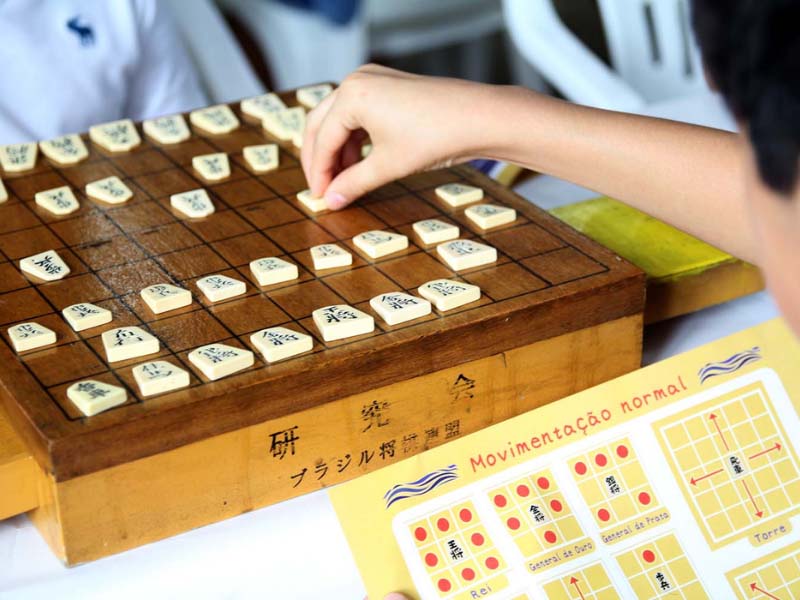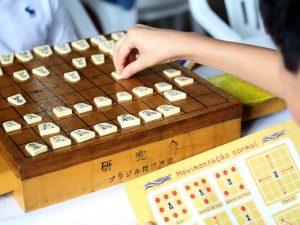Unique and Interesting Traditional Japanese Game – Every country, including Japan, has its own traditional games. Japanese people work hard, but they consider games to be part of their culture and life. This is why many traditional Japanese games are still played today.
Unique and Interesting Traditional Japanese Game
bywinki – Traditional Japanese games range from those that do not require tools to those that do. For example, traditional games using boards or cards. If you are curious about what this traditional Japanese game is like, see our complete review below.
History of Japanese gaming
Japanese people always look serious, but they also consider having fun to be an important part of life. Therefore, playing has been an important part of their lives since the Heian period. Traditional games were not just entertainment, but also determined the palace hierarchy.
The history of Japanese games is closely related to Chinese traditions. Therefore, traditional Japanese games are largely the result of cultural assimilation with China. Later, the Japanese modified the original version of the game and created their own entertainment traditions.
Traditional Japanese games have had many variations over the years. For example, start with archery, juggling, or board games that require mental ability to play. So far, Japan still has traditional games that are played by both adults and children. traditional Japanese board game
It turns out that this game has been known in Japan since the 1920s and is still played today. One of the games that was popular among Japanese nobles in the Middle Ages was board games. So, what are traditional board games? Here’s the review:
1. go
Traditional games using the Da board have existed in Japan since the mid-7th century. This game, which is said to have originated from China, consists of 19 horizontal and vertical pillars. Each player fills a column with black and white “Go” stones.
The goal of playing two colors is to control more area of the board than your opponent. Go may seem simple, but it requires complex strategies to win. Therefore, Go is a game that can be played personally or professionally.
2. Sugoroku
This is a board game that originates from Japan and is very easy to play. Players can roll the dice and move numbers according to the number of dice they receive. There are two ways to play Sugoroku: one is like snakes and ladders, and the other is like backgammon.
Baca Juga : Jenis Permainan Uno Untuk Keluarga
traditional game with cards
Traditional Japanese games not only use boards but also cards. In fact, there are many possible traditional Japanese games that use cards. If you are interested in traditional games that use cards, see our review below.
1. Narabu Seven
This game requires standard playing cards. Can be used with or without Joker. Cards are then dealt according to the number of players and placed on the table in the first round. In the second round, players add cards of the same color in the appropriate order.
If a player has no matching cards, he must pass the round three times throughout the game. The game ends when one of the players finishes his cards. 2. Hanafuda
This traditional Japanese game is believed to have appeared in Japan between 157 and 1603. Hanafuda is also called flower cards because each card displays beautiful floral motifs with bright colors. There are many different ways to play this game, but generally you have to match cards with the same flower pattern.
3. Karuta
This is a traditional picture card game originating from Japan. Karuta is played by at least three players, one of whom reads the cards. Karuta is usually played during Japanese New Year. Therefore, many people say that karuta is a tradition of celebrating New Year in Japan.
4. coordinating minister
This game is also known as Patchin or Bettan and is played with two or more players. Menko is made of thick paper and each page has colorful Japanese drawings, and you can also draw manga and anime characters on it.
The way to play is very simple, players place their cards on the floor. Other players then try to turn over the player’s cards by throwing cards. If successful, the player receives the two cards. The player who gets the most cards is the winner.
traditional games for children
Above we have explained why traditional games require cards and a board. However, both games are usually played by adults. Now let’s learn about traditional Japanese games that children often play. Here’s the review:
Baca Juga : The Best Asian Films Adapted By Hollywood
1.Kendama
As the name suggests, a kendama consists of two parts: a hammer-shaped “ken” and a ball-shaped “dama” connected by a rope. There are over 1,000 ways to play Kendama, and kids love it. However, the easiest technique is to throw the ball up and catch it with a ken.
second comma
In Indonesian, comma is a traditional Japanese play, like top. The way to play is the same as Indonesian gas, only using the strings to spin the top. There are many materials for comma, but the oldest is made of iron called beigoma, which was widely used in the 1920s.
3. Fukuwarai
This is usually a children’s game played during New Year. A fun way to play is that players are blindfolded and have to attach parts of their face such as the mouth, nose and eyes. The face must be attached to a board with a picture of the face. 4. Rotoobi
Similar to Indonesia, Japan also has a rope jumping game called Nawatobi. Skipping rope is played in the same way as jumping rope, that is, two people win each end of the rope and spin the rope. Then the other players jump onto the rotating rope. However, you can also play the tobi rope yourself by holding both ends of the rope in your hands. 5. Bean Bags
Japanese girls love beanbags because this game is very fun. Bean bags consist of five small bags filled with beans that players must throw and catch. There are two formations or techniques for playing beanbag: yose-dama and nage-dama.




